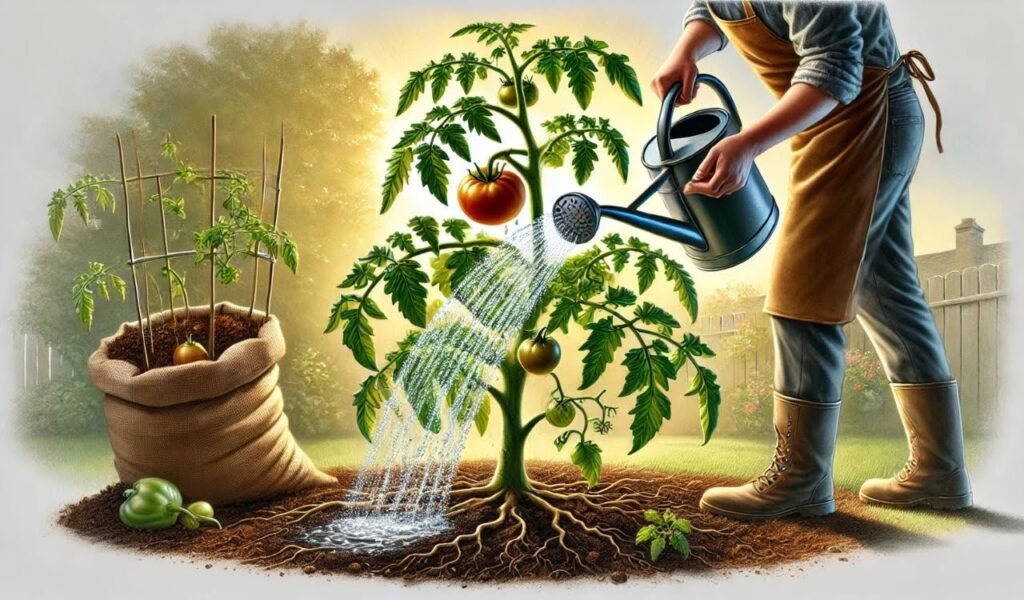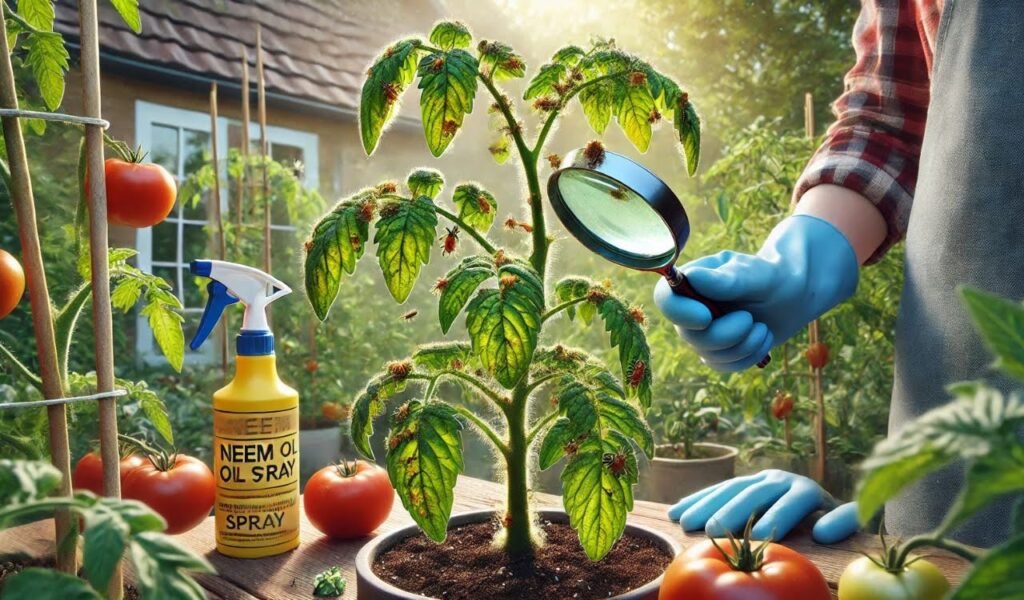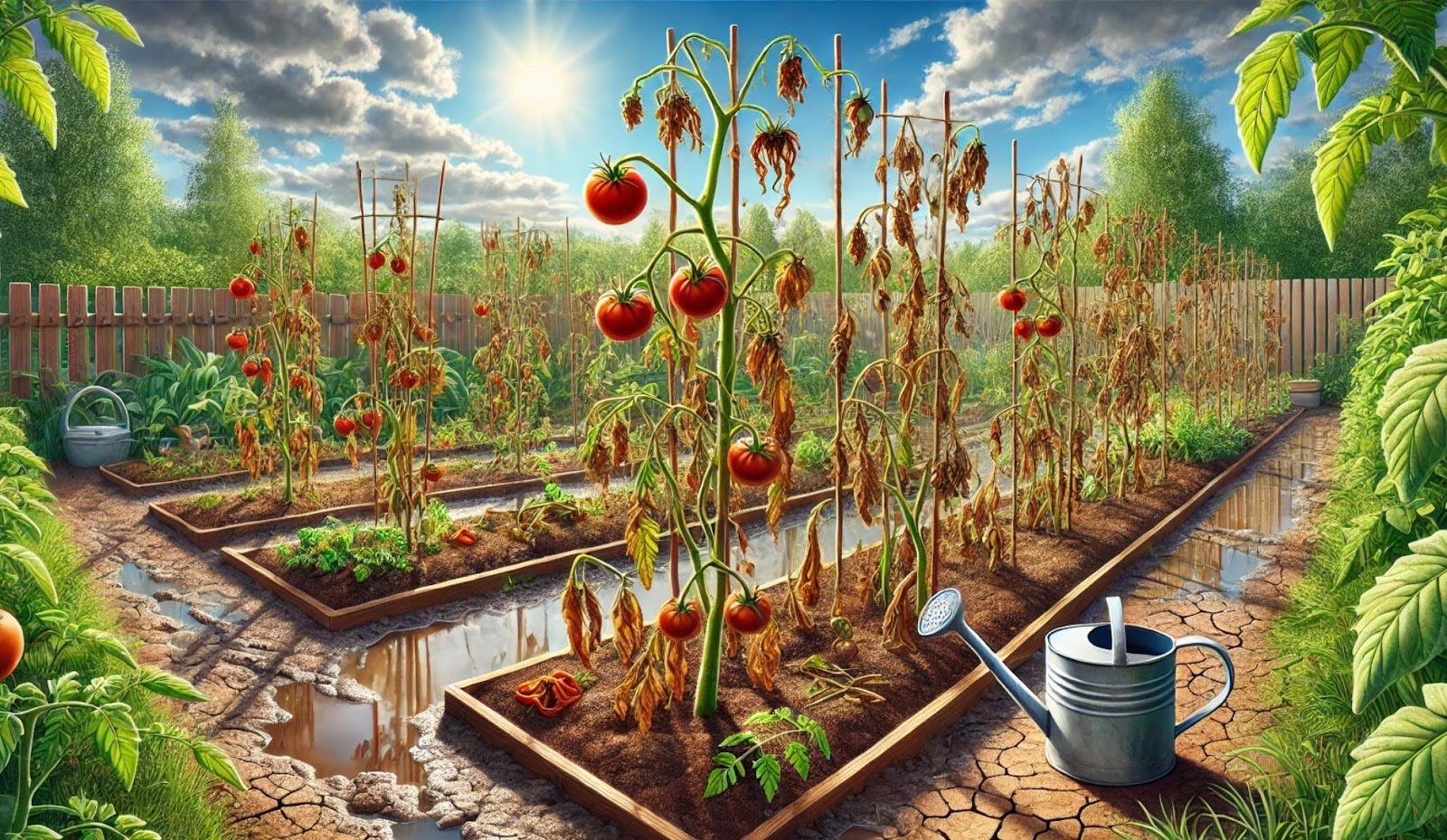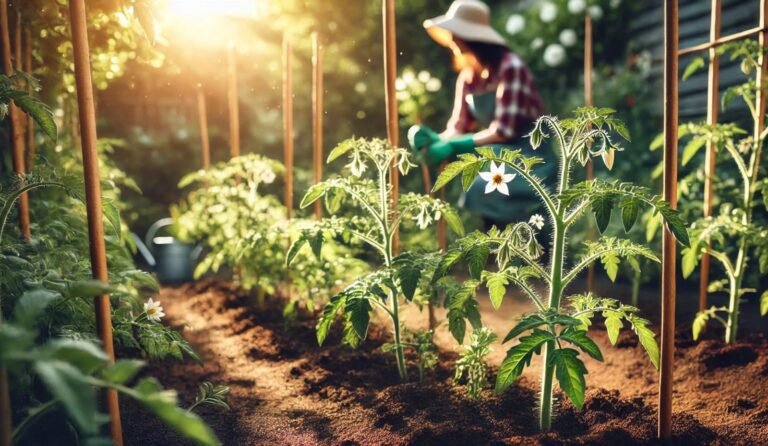Why Are My Tomato Plants Wilting? Common Causes and Solutions
Why are my tomato plants wilting? If your once-thriving plants are suddenly drooping, it’s a clear sign something’s off. Is it the water, the heat, or maybe pests lurking around? Don’t worry—you’re not alone, and this guide is here to help. Let’s dig into the common causes and quick fixes to get your tomatoes back on track. Healthy, happy plants are just a few steps away!
Basics of Wilting
What is Wilting?
Wilting occurs when a plant loses turgor pressure—the water pressure inside its cells that helps it maintain rigidity. Without sufficient water in its cells, the plant begins to droop and lose its structural support. While wilting can sometimes be temporary and reversible, it can also signal deeper problems that threaten your plant’s health.
How Wilting Affects Tomato Plants
When a tomato plant wilts, its ability to photosynthesize, absorb nutrients, and grow is compromised. Severe or prolonged wilting can lead to:
- Stunted growth.
- Reduced fruit production.
- Increased susceptibility to pests and diseases.
Understanding the causes of wilting is the first step to addressing the issue.
The Main Causes of Wilted Tomato Plant

A. Underwatering
When tomato plants don’t receive enough water, their roots struggle to transport moisture to the leaves and stems. This is especially common during hot weather or in fast-draining soil.
Signs of Underwatering
Soil feels dry and powdery to the touch. Leaves become crispy and curl inward. Stems droop but remain firm when touched.
Why It Happens
Inconsistent watering schedules. Hot, dry weather causing rapid evaporation. Poor soil quality that doesn’t retain moisture.
How to Fix It
Water deeply, ensuring moisture reaches the root zone (6–8 inches deep). Use mulch around the base of the plant to retain moisture. Water consistently, especially during hot weather or when plants are fruiting.
B. Overwatering
Too much water can suffocate your tomato plant’s roots, leading to rot and an inability to absorb nutrients.
Signs of Overwatering
Yellowing leaves that droop and eventually fall off. Soil feels constantly wet or soggy. Mushy, foul-smelling roots when inspected.
Why It Happens
Watering too frequently or without checking soil moisture. Poorly draining soil that retains too much water. Using containers without proper drainage holes.
How to Fix It
Stop watering temporarily and let the soil dry out. Improve drainage by mixing sand or perlite into the soil. Avoid overwatering by watering only when the top 2 inches of soil feel dry.
C. Fungal Diseases
Fungal diseases like Fusarium Wilt and Verticillium Wilt are common causes of tomato plant wilting. These soilborne pathogens block water transport within the plant, causing it to droop.
Fusarium Wilt
Cause: A fungus that enters through the roots and clogs the plant’s vascular system.
Symptoms: Yellowing lower leaves, uneven wilting, and brown streaks in the stem when cut open.
Solution: Remove infected plants and destroy them to prevent spreading. Avoid planting tomatoes in the same location for at least 2–3 years. Use disease-resistant tomato varieties like “Celebrity” or “Better Boy.”
Verticillium Wilt
Cause: A similar fungus that thrives in cooler temperatures.
Symptoms: Yellowing leaves with dark veins, stunted growth, and leaf drop.
Solution: Solarize the soil to kill pathogens by covering it with clear plastic during the hot summer months. Choose resistant varieties and rotate crops annually.

D. Pest Infestations
Pests like root-knot nematodes, aphids, and spider mites can stress your tomato plants and cause wilting.
Root-Knot Nematodes
Microscopic pests that create galls (knots) on roots, disrupting water and nutrient absorption.
Symptoms: Stunted growth, yellowing leaves, and wilting even when soil moisture is adequate.
Solution:
- Plant nematode-resistant varieties (look for labels with “N”).
- Rotate crops with non-host plants like onions or marigolds.
Other Pests
Aphids: Small green or black insects that suck sap from leaves, causing drooping.
Spider Mites: Tiny pests that cause speckled leaves and webbing.
Solution:
- Use insecticidal soap or neem oil.
- Encourage natural predators like ladybugs and lacewings.
E. Environmental Stress
Heat Stress
High temperatures cause excessive water loss through transpiration, leading to temporary wilting during the hottest part of the day.
Solution: Provide shade using garden fabric or move potted plants to a cooler location.
Transplant Shock
Young plants can wilt after being moved to a new location if their roots are disturbed.
Solution: Harden off plants before transplanting and water them thoroughly after planting.
Other Less Common Reasons for Tomato Plant Wilting
Bacterial Wilt
Bacterial wilt, caused by Ralstonia solanacearum, is a fast-acting disease that blocks water transport.
Symptoms: Sudden wilting of entire plants, even when the soil is moist.
Solution:
- Remove infected plants and avoid planting in the same area.
- Sterilize tools and equipment.
Nutrient Deficiencies
Lack of essential nutrients like potassium or magnesium can weaken plants, leading to wilting.
Solution: Use the best fertilizer for tomato plants, with balanced levels of potassium, nitrogen, and phosphorus to ensure strong, healthy growth.
Chemical Damage
Herbicide Drift: Accidental exposure to herbicides can deform and wilt leaves.
Salt Buildup: Over-fertilization can cause salty soil, which restricts water uptake.
Solution: Flush the soil with water to remove excess salts and avoid applying fertilizers near the plant base.
How to Fix and Prevent Wilting in Tomato Plants
A. Adjusting Watering Practices
Use a moisture meter to avoid overwatering or underwatering. Water early in the morning to allow the soil to absorb water before the heat of the day.
B. Managing Soil Health
Test your soil’s pH and drainage capability. Tomatoes prefer a pH of 6.0–6.8. Add organic matter like compost or peat moss to improve soil aeration and water retention.
C. Preventing Diseases
Practice crop rotation to reduce the risk of soilborne diseases. Sterilize tools and avoid working with wet plants to prevent disease spread.
D. Protecting from Pests
Install physical barriers like row covers to keep pests away. Intercrop with pest-repelling plants such as garlic, onions, or marigolds.
E. Handling Environmental Stress
Use mulch to regulate soil temperature and reduce water evaporation. Provide temporary shade during extreme heat waves.
FAQ
How do I know if my tomato plants are wilting from overwatering or underwatering?
Check the soil: dry, cracked soil indicates underwatering, while soggy soil signals overwatering.
Why do my tomato plants wilt only during the day?
This is usually caused by heat stress. Plants may recover overnight if the roots and water supply are healthy.
Can tomato plants recover from wilting?
Yes, tomato plants can recover from wilting if the root cause is identified and addressed promptly. Temporary wilting caused by heat or underwatering often resolves quickly with proper care. However, wilting due to diseases like Fusarium or Verticillium wilt may not be reversible, and preventive measures should be prioritized.
Why are my tomato plant leaves wilting but the soil is wet?
If the soil is wet and the plant is wilting, the problem could be overwatering, root rot, or a fungal or bacterial disease. Wet soil can suffocate roots, leading to poor water and nutrient uptake. Inspect the roots for signs of rot (mushy, discolored roots) and adjust your watering practices accordingly.
How often should I water my tomato plants?
Tomato plants generally need about 1–1.5 inches of water per week, including rainfall. In hot climates, they may need watering 2–3 times a week. Check the soil moisture by sticking your finger 2–3 inches into the soil; if it feels dry, it’s time to water.
Can I use tap water for watering my tomato plants?
Yes, you can use tap water for watering, but it’s best to let the water sit out for 24 hours to allow chlorine to dissipate. If your tap water is highly alkaline or contains high levels of salts, consider using rainwater or filtered water to avoid soil imbalances.
Final Thoughts
Wilting tomato plants can be alarming, but with proper care, they can bounce back. By understanding why tomato plants wilting—whether it’s due to watering, pests, or diseases—you can take targeted steps to address the issue. Gardening is a rewarding journey, and with these tips, you’re well on your way to growing healthy, thriving tomato plants. Start today, and soon you’ll enjoy the fruits of your labor—literally!







